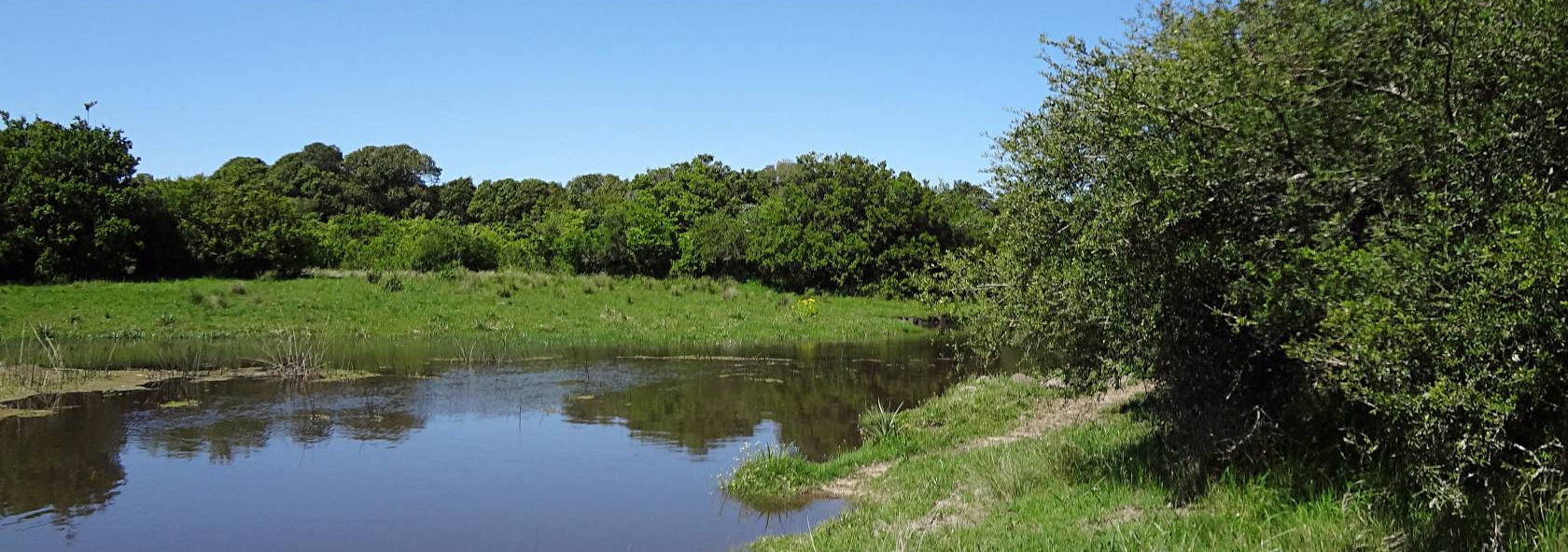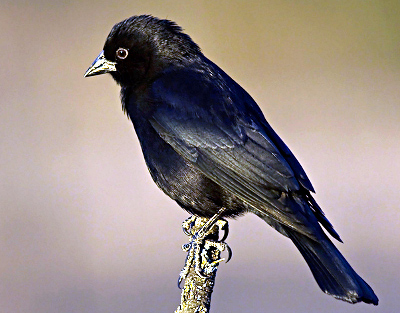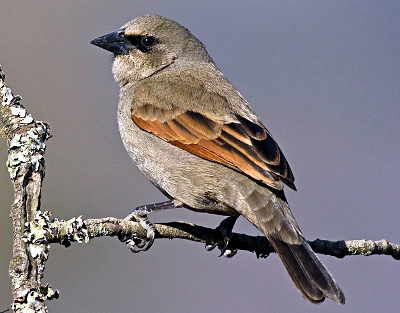by Ma. C. de Mársico
The screaming cowbird is the most specialized of the obligate brood-parasitic cowbirds (genus Molothrus). It parasitizes mainly the grayish baywing, or simply baywing, a cooperatively breeding blackbird that is broadly distributed in Argentina. This species is also a secondary host of the shiny cowbird.
Parasitism rates by screaming cowbird can reach 100% of baywing nests, most of which suffer multiple events of parasitism. Brood parasitism negatively affects host’s reproductive success. In baywings, the impact is reflected mainly in egg losses caused by cowbird females and the increased risk of abandonment of parasitized clutches.
The reproductive costs of parasitism favor the evolution of defenses in baywing populations, which in turn can select for counter-defenses in screaming cowbirds, leading to coevolutionary processes between parasites and hosts. The most noticeable evidence is the evolution of visual and vocal mimicry of host juveniles by screaming cowbirds in response to host discrimination against juveniles unlike their own. But reciprocal adaptations between these species encompass the entire nesting cycle.
For more than a decade, we have used this system as a model to study how (co)evolutionary interactions and ecological factors shape behavioral, morphological and life-history traits in brood parasites and their hosts. Our current research projects focus on topics like:
- - nest prospecting and parasitism behaviors of screaming cowbird females
- - impact of intraspecific competition on parasitic offspring
- - evolution of manipulative signals in parasitic nestlings and fledglings
- - cues and mechanism involved in juveniles discrimination by baywings and its exploitation by the parasitic juveniles
- - mating system and social behavior of screaming cowbirds
- - factors that favor specialization in host use or constrain the colonization of new host species by screaming cowbirds.

Sequence of first prebasic molt. Photographs of Screaming Cowbirds at different stage of plumage maturation: 45, 130 and 160 days of ag (Ursino et al., 2012).
Fieldwork
Our field work is being carried out at Reserva El Destino - Elsa Shaw de Pearson Foundation, located in the Province of Buenos Aires, Argentina. From November to March, the Screaming Cowbird and the Baywing reproduce in this place, allowing us to perform field experiments and to work with individuals in captivity.

Reserva El Destino (R. Scardamaglia, 2014)
Related publications
Scardamaglia RC and Reboreda JC. Ranging behavior of female and male Shiny and Screaming Cowbirds while searching for host nests. Auk 131: 610-618 (2014).
De Mársico MC and Reboreda JC. High frequency but low impact of brood parasitismo by the specialist Screaming Cowbird on its primary host, the Baywing. Emu - http://dx.doi.org/10.1071/MU14008 (2014).
De Mársico MC, Gloag R, Ursino CA and Reboreda JC. A novel method of rejection of brood parasitic eggs reduces parasitism intensity in a cowbird host. Biology Letters 9: 007 (2013).
Ursino CA, Facchinetti C and Reboreda JC. Preformative molt in brood parasitic Screaming (Molothrus rufoaxillaris) and Shiny (M. bonariensis) Cowbirds. Ornitología Neotropical 23: 163-171 (2012).
De Mársico MC, Gantchoff MG and Reboreda JC. Host-parasite coevolution beyond the nestling stage? Mimicry of host fledglings by the specialist screaming cowbird. Proceedings of the Royal Society B 279: 3401-3408 (2012).
De Mársico MC, Mahler B and Reboreda JC. Reproductive success and nestling growth of Bay-winged cowbirds parasitized by Screaming and Shiny Cowbirds. Wilson Journal of Ornithology 122: 417-431 (2010).
De Mársico MC and Reboreda JC. Brood parasitism increases mortality of Bay-winged Cowbird nests. Condor 112: 407-417 (2010).
De Mársico MC and Reboreda JC. Egg-laying behaviour in screaming cowbirds. Why does a specialist brood parasite waste so many eggs?. Condor 110: 143-153 (2008).





